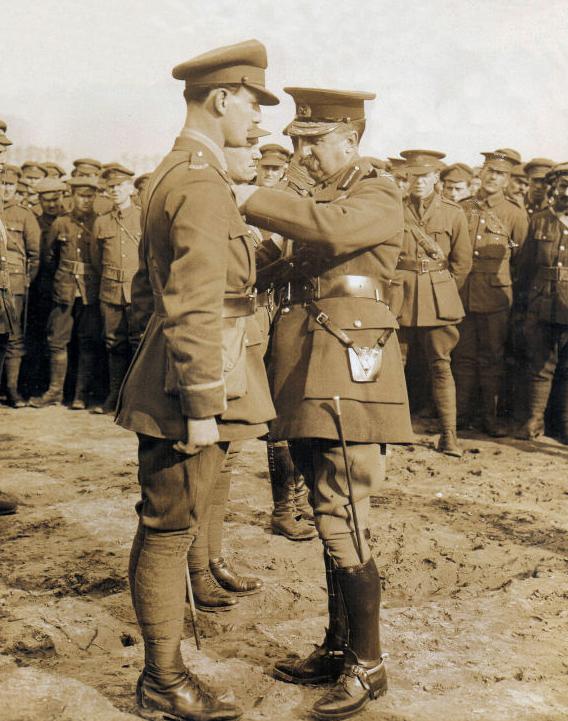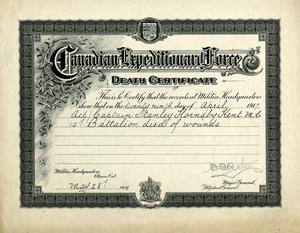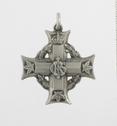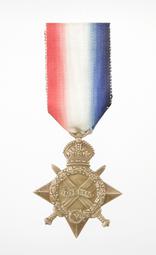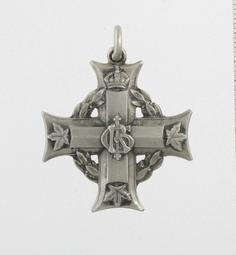Unit
10th Canadian Infantry Battalion (Canadians)
Branch
Infantry
Service Component
Canadian Expeditionary Force
Service Number
2073
birth
1890/01/25
South Shields County, Durham, United Kingdom, England
death
1917/04/29
France
grave
Aubigny Communal Cemetery Extension, France
Gender
Male
Stanley Hornsby Kent was born in South Shields, County Durham, England, on 25 January 1890. He immigrated to Canada in 1913.
A banker, Kent joined the Divisional Cavalry at Valcartier Camp, Quebec, on 23 September 1914. After initial training in Canada, he travelled to Plymouth, England, with his unit on 3 October 1914 as part of the First Contingent of the Canadian Expeditionary Force. Upon arrival in England, he was sent to officer training school.
On 10 July 1915, Kent was transferred from the cavalry to the 10th Canadian Infantry Battalion (Canadians). He joined the unit in France on 25 July 1915 with the rank of temporary lieutenant. On 5 February1916, Kent received a slight wound in the field. He was treated at a field ambulance station and returned to duty the same day. A month later, he was awarded the Military Cross.
In June 1916, Kent was promoted to the rank of acting captain. On 6 July 1916, when he was in the trenches, he received shell wounds to the right arm, thigh, and knee when a “whizz-bang” (small calibre, high-velocity shell) exploded near him. Although not life threatening, the wounds were serious enough for him to be evacuated to England for treatment. After a lengthy convalescence, Kent returned to the 10th Battalion on 8 February 1917.
On 27 April 1917, Kent was wounded while observing enemy positions in advance of the 2nd Canadian Brigade’s attack on the major German billeting area at Arleux-en-Gohelle (Battle of Arleux, 28–29 April). The circumstances are described as follows in the Canadian Expeditionary Force’s Circumstances of Casualty report: “It was very dark and the party evidently had lost its bearings and ran into wire. The enemy detected their presence and immediately opened up with rifle and machine gun fire — a bullet penetrating Captain Kent’s lung. He was immediately carried to No. 30 Casualty Clearing Station where he died two days later.”
On 17 July 1917, Kent was posthumously awarded a bar for his Military Cross for having led a successful trench raid.
Stanley Hornsby Kent is buried in Aubigny Communal Cemetery Extension, in France.
Military Cross
“For conspicuous gallantry. He led a wire-cutting party, which worked for six hours, and then headed an attacking party through the gap. In spite of heavy machine-gun and rifle fire and bombing by the enemy he inflicted severe loss on them. He has on two previous occasions led daring reconnaissances.”
– London Gazette, 14 March 1916, Supplement 29508
Bar to Military Cross
“For conspicuous gallantry and devotion to duty. He led a successful raiding party on the enemy lines. He captured two prisoners and obtained much valuable information. Undoubtedly many lives were saved as a result of the raid. He was untiring in his efforts, and a splendid example to his men.”
– London Gazette, 17 July 1917, Supplement 30188

